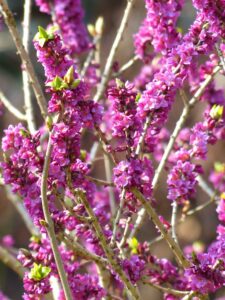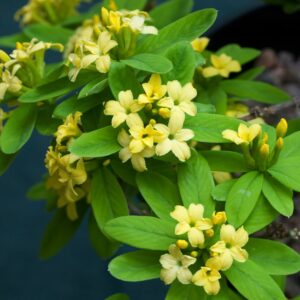Daphne
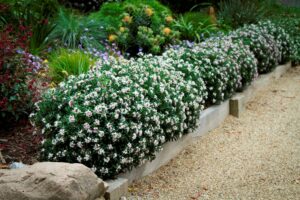
The name is actually a mistake
Where did the name Daphne come from? Well, it’s quite a complicated story. Daphne is known as the nymph in Greek mythology who was turned into a shrub to escape Apollo. The shrub she transformed into was laurel (Laurus nobilis). Daphne was also the Greek name for the laurel, which is a completely different plant.
Because the leaf of the plant we now know as Daphne resembles a bay leaf, the plant was named Daphnoides, where “oides” meaning “similar to”. The Swedish botanist Linnaeus then named an evergreen species very similar to bay laurel ‘Daphne laureola’. These days, we refer to this plant genus as Daphne.
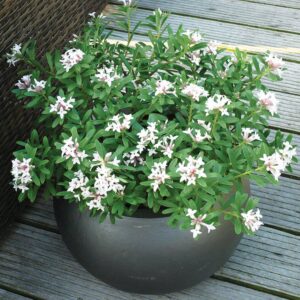
Why is Daphne such a valued plant in the garden?
What’s special about Daphne? First of all, the flowers spread a very pleasant scent. They are also beautiful, delicate flowers, that bloom from late winter to early summer. This makes them an important source of nectar during a time of the year when few plants are in bloom.
The plant remains compact, and doesn’t need a lot of care. Most species are evergreen.
Daphne’s evil superpowers
Daphne is highly potent. The berries are so acrid that they can cause a burning sensation in the mouth and even induce internal bleeding. This is a very poisonous plant indeed, as the name of one of the species confirms: Daphne mezereum. The name mezereum originated in Persian, and means “destroyer of life”. An old common name for Daphne is ‘Widowmaker’, another clear warning not to eat this plant.
Birds, however, are immune, and enjoy the berries.
Care
- It’s not a good idea to move Daphne once planted.
- Place the compact Daphne along a path so that you can enjoy the wonderful scent as you walk by.
- Semi-shaded
- Permeable soil.
- Little pruning. All that’s needed is to cut off unsightly areas in the summer. Give Daphne a generous helping of compost in the spring and autumn.
Blooms on bare branches
Wonderful sweet scent
Purple-pink flowers
Blooms in March and April
Deciduous
Daphne x tran ‘Eternal Fragrance’
Forms a compact, round bush
Wonderful sweet scent
Abundant flowers from early spring to summer
Green-grey leaves remain on the plant until the first frosts
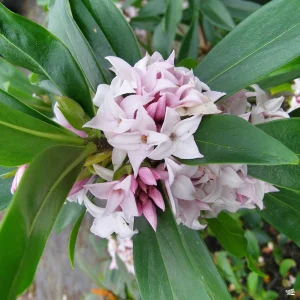 Daphne odora ‘Perfume Princess’
Daphne odora ‘Perfume Princess’
Large, white with pink flowers
Sweet scent with lemon fresh undertone
Long flowering from mid-winter on
Abundant flowers
Daphne gemmata ‘Royal Crown’
Stays compact
Wonderful sweet scent
Yellow flowers
Blooms from spring onwards
Published on: 4 Janeiro 2024
